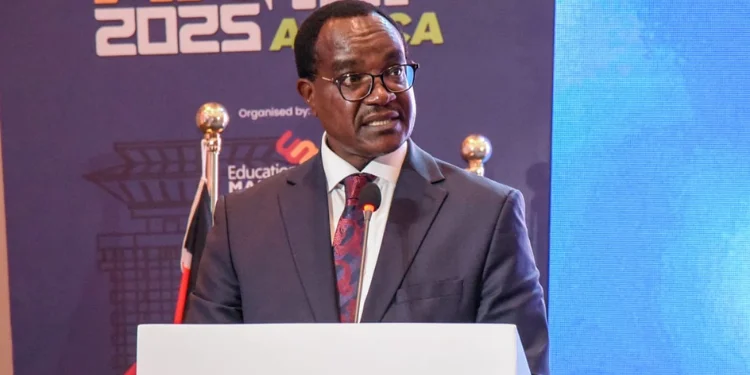Project-Based Learning (PBL) is an educational approach in which students learn by participating in authentic, contextually relevant tasks.
This approach is critical in implementing the Competency-Based Education (CBE) since it can be applied by selecting a topic that appeals to the children and incorporating their ideas into the project.
And through active participation, kids can acquire skills that will be useful later in life.
How to Create Effective PBL Strategies
As a pre-school teacher, you can implement some strategies to make your PBL strategy effective. Some of the strategies include the following steps:
>> Creating an innovative classroom environment.
>>.Watching and listening.
>>Facilitating the children.
>> Open discussion on children’s responses.
The approach to establishing PBL begins with building an innovative or creative environment within the classroom.
And in this regard, the teacher’s opinion concerning their students’ abilities is essential.
The children may be innovators, designers, performers, creators, researchers, or technologists.
However, their potential will only be unlocked if they receive proper attention, time, space, tools, and materials. Therefore, having indoor and outdoor spaces with a variety of materials is critical for children’s growth and nurturing.
It is important to understand how problematic fake news can be. It is essential to make students aware of the repercussions of this phenomenon from an early age.
In this case, teachers can assign the children a task to observe the features of exaggerated and false media and its harmful effects on society. Students can be offered a chance to design a public announcement where they will advise people about separating a trustworthy news story from a fake one.
Although this is not relevant to Early Childhood Education, it can be assigned as a project-based learning activity at some level within the learning cycle.
PBL differs from other teaching methods because it combines various academic subjects into a single project. This strategy benefits individuals who feel anxious about certain topics or subjects.
PBL also facilitates learners’ focus entirely on fulfilling the learning objectives. Its structure differs from the normal classroom setting since it permits teachers to evaluate students through a more comprehensive framework, considering their particular strengths.
This approach also represents each learner’s strengths and areas that need improvement.
PBL and Academic Achievements
For many learners, doing redundant class activities and homework assignments becomes boring after a while in the learning cycle. The traditional teaching system introduces them to knowledge and concepts using passive approaches, such as attending lectures.
Although lectures boost students’ academic performance, they do not consider the limitations of conventional teaching and learning, making it difficult for students to apply the knowledge to solve practical and real-world problems.
In contrast to this conventional method, PBL methods engage students in problems where they explore scenarios, generalise the knowledge they have gained, make hypotheses, and solve problems.
And indeed, various research findings in the world of academia have more often than not found that PBL methods contributed significantly to the students’ success.
Development of Practical Skills
Project-based learning provides students with the opportunity to develop practical skills. The internet today offers an abundance of data, so the standard teaching-learning system that endeavours to deliver knowledge is not totally equipped to meet the needs of today’s learners.
They need to understand fundamental abilities, like reading and writing, language, research, science, and practical skills, comprising collaboration, communication, reasoning, problem-solving aptitudes, and the use of technology.
Under such circumstances, PBL provides students with exclusive learning opportunities, especially when integrated with technology.
In relation to implementing the current CBE system of learning in the country, PBL strategies are also helpful in equipping students with technical skills and learning capabilities, allowing students to comprehend the future workplace environment and the business environment.
Advantages of PBL
>>Student-Focused Learning: In traditional learning settings, the teacher is the central figure, guiding the class and offering instruction. In contrast, PBL reorganises the current system by developing a student-focused environment.
>>Enables Critical Thinking: The standard educational setting emphasises memorisation and recollection. With PBL, students get a deeper understanding of the concepts.
>>Promotes Social Learning: PBL can be quite helpful in instilling these qualities in children from a young age. It concentrates on group work to find solutions to a problem.
>>Integrates Various Subjects: PBL differs from other teaching methods because it combines various academic subjects into a single project.
>>Enhances Individual Thought Process: A challenge with traditional classroom learning is that all students are assessed similarly. PBL is helpful in that students will organically order themselves into roles that are most advantageous to their individual strengths.
How Does PBL Work?
Through Project-Based Learning, students are assigned a project lasting over a dedicated time period. There, they are engaged in solving a simulated real-world problem or responding to a complicated question.
In this case, they illustrate their competence and skill by making a public item or creating presentations for real-world audiences.
Students gain an extensive understanding of the topic they are learning and strengthen their critical thinking, cooperation, creativity, and communication skills. PBL induces enthusiastic, creative energy among students and teachers alike.
Role of Project-Based Learning strategies and children’s Development
Project-based learning involves investigations of topics that interest children and are related to their daily lives. Children generate questions concerning the topic, and they find answers to their questions through exploration and investigation.
>>Stimulate children’s exploration of science and social studies while cultivating their language and literacy, mathematical, technological, and artistic skills.
- >>It helps children apply their skills meaningfully.
- >>It promotes higher-level thinking and allows them to implement positive approaches in their learning.
- >>PBL enables children to solve problems creatively.
- >>It develops their social and emotional skills. For example, conflict resolution, sharing responsibilities and collaborative working.
By Ben Oroko
The Writer is a Communications Practitioner and Correspondent based in Kisii.
benoroko2000@yahoo.com
You can also follow our social media pages on Twitter: Education News KE and Facebook: Education News Newspaper for timely updates.
>>> Click here to stay up-to-date with trending regional stories
>>> Click here to read more informed opinions on the country’s education landscape






